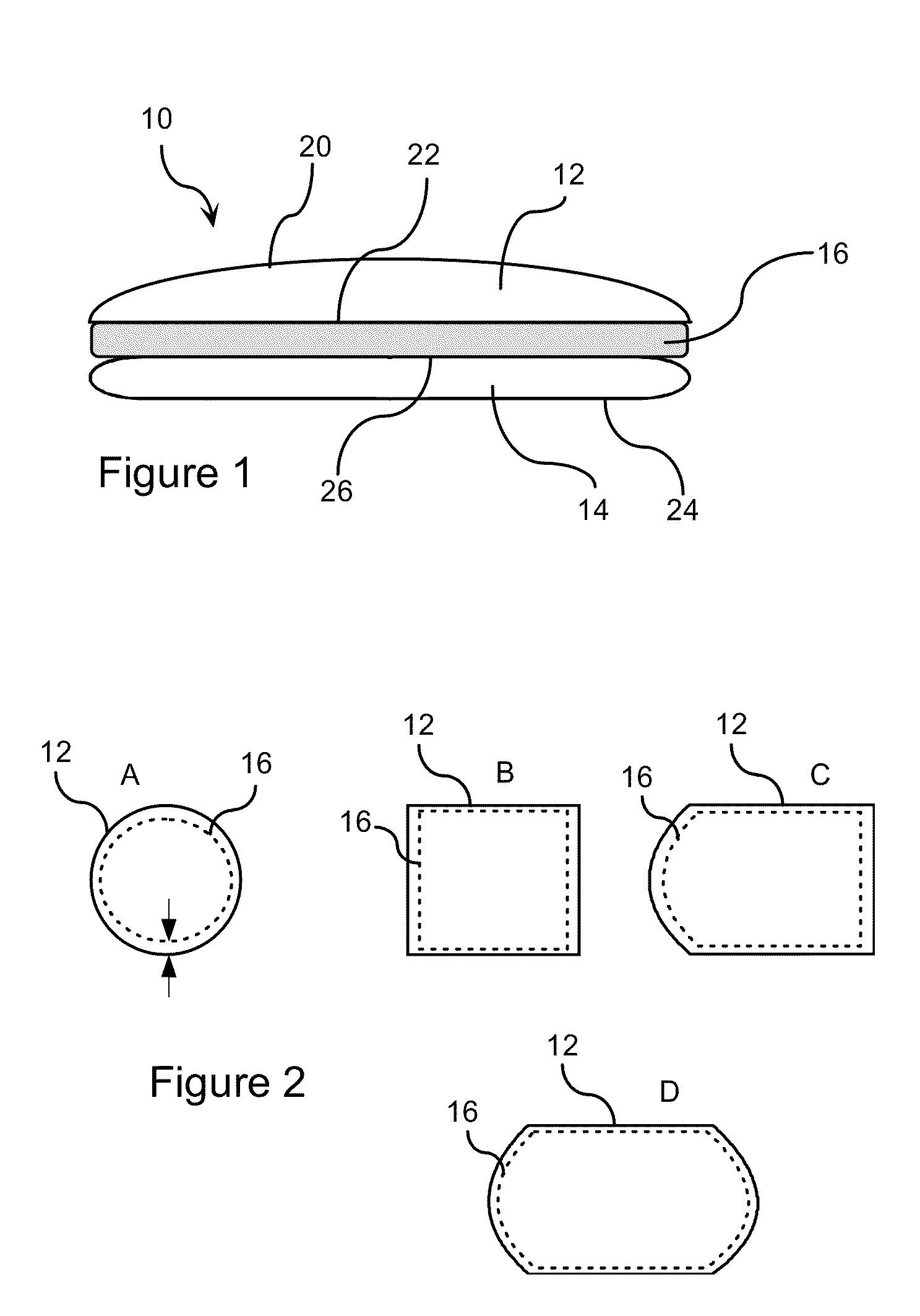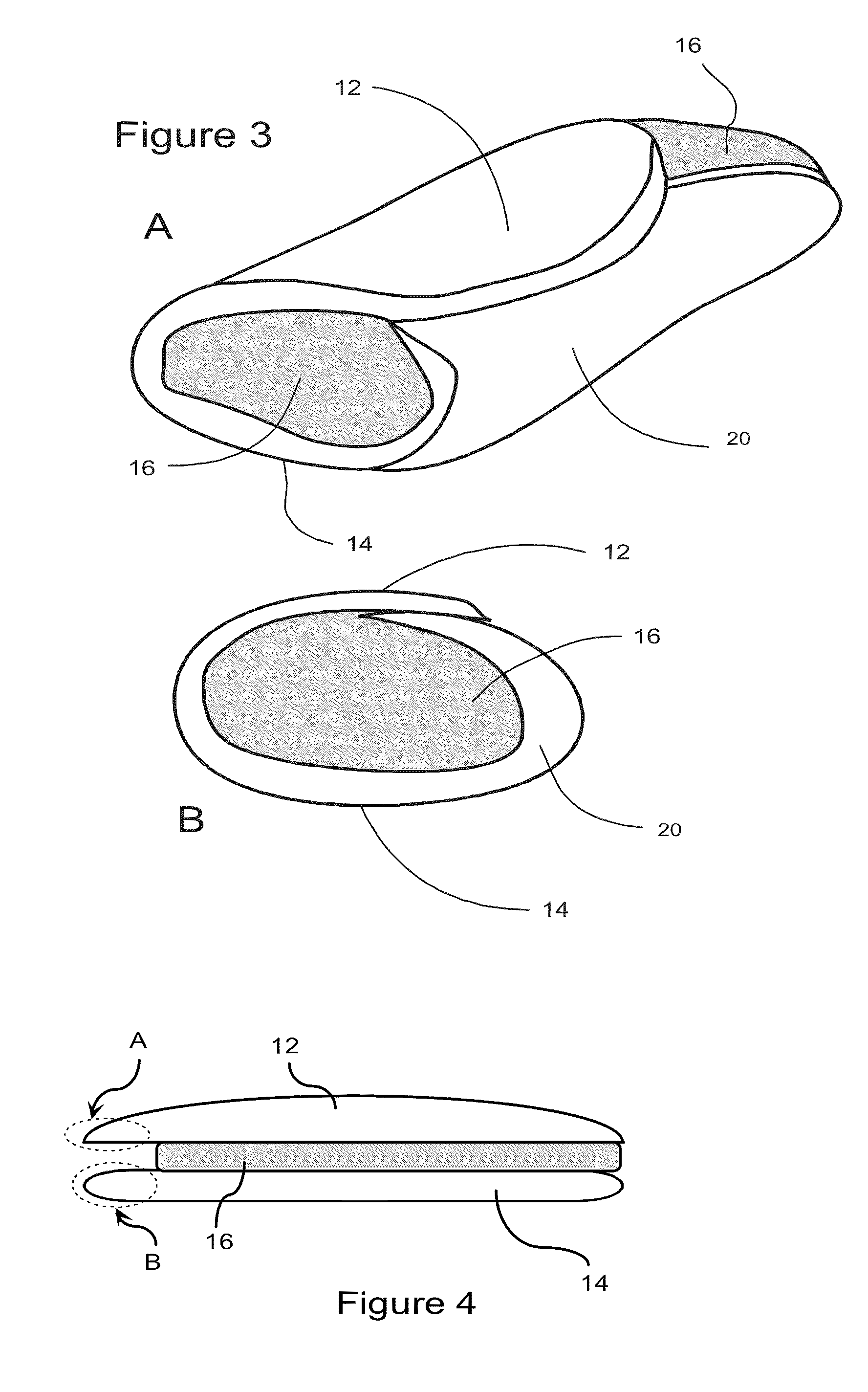Baked Microwavable Frozen Bread and Bakery Products
a technology of frozen bread and microwavable, which is applied in the field of fully assembled frozen bakery products, can solve the problems of inability to prepare microwavable, fully assembled, and conventionally-sized frozen bread products having a filling generally not being successful, and achieves satisfactory texture and chewability characteristics, good organoleptic properties, and no significant hardening or drying out
- Summary
- Abstract
- Description
- Claims
- Application Information
AI Technical Summary
Benefits of technology
Problems solved by technology
Method used
Image
Examples
example 1
[0055]This Example illustrates the preparation of several bread products. The resulting bread products were evaluated for their ability to withstand microwave heating. Two control bread products and one inventive bread product were prepared. The first control bread product was prepared from a conventional dough formulation. The second control bread product was prepared from a dough similar to the inventive dough formulation except that xanthan gum was omitted from the formulation. The formulations, expressed in baker's percentages, for the three dough samples are provided below:
Control 1Control 2InventiveIngredient(% flour basis)(% flour basis)(% flour basis)Flour100100100Compressed Yeast2.752.752.75Sodium Stearoyl0.380.380.38LactylateSalt1.11.11.1Sucrose8.08.08.0Soybean Oil7.07.07.0Shortening4.04.04.0Water60.060.060.0Monoglycerides / 0.20.20.2DiglyceridesLecithin0.50.50.5Xanthan000.35Guar00.50.5Methylcellulose00.50.5Diacetyl Tartaric0.50.50.5Acid Esters ofMonoglyceridesSpices / Seasoni...
example 2
[0061]This Example illustrates the preparation fully assembled frozen sandwiches using the three bread products (both punched and non-punched in bun form) described in Example 1. For evacuation, each fully assembled frozen sandwich was placed on a raised, vented tray without a susceptor and microwaved at full power from the frozen state until the center portion of the filling reached a minimum temperature of about 160° F.; typically the time required to reach this minimum temperature was about 3.5 minutes; the temperature range of the filling was about 160 to about 165° F. The quality of the bread was evaluated after microwave treatment using similar criteria as in Example 1 except that the crumb parameters were not obtained since there was filling contacting the crumb. The data was converted to a single average quality score on a 1-5 scale (1 being best with 5 being worst).
[0062]A filling comprising about 60 percent cubed chicken, about 15 percent diced vegetables, about 7 percent ...
example 3
[0064]This Example provides a comparison of the inventive sandwich of Example 2 (using the punched bread in the form of a bun and the chicken / vegetable / cheese filling) with a commercially available frozen sandwich. The commercial sandwich (Stouffer's Corner Bistro® Philly-Style Steak and Cheese Panini) was assembled by placing the individual slices with filling together to form an assembled sandwich. Both the inventive assembled sandwich (about 8 ounces) and the assembled commercial sandwich (about 6 ounces) were heated separately from the frozen state in a microwave oven at full power for 3.5 minutes. The temperature of the filling reached a minimum of about 160° F. for both sandwiches.
[0065]The heated sandwiches were allowed to stand for about 5 minutes before evaluation. The bread portion of heated commercial sandwich had a chewy, but acceptable, crumb texture and an extremely chewy and unacceptable crust. The bread portion of the heated inventive sample had good overall texture ...
PUM
 Login to View More
Login to View More Abstract
Description
Claims
Application Information
 Login to View More
Login to View More - R&D
- Intellectual Property
- Life Sciences
- Materials
- Tech Scout
- Unparalleled Data Quality
- Higher Quality Content
- 60% Fewer Hallucinations
Browse by: Latest US Patents, China's latest patents, Technical Efficacy Thesaurus, Application Domain, Technology Topic, Popular Technical Reports.
© 2025 PatSnap. All rights reserved.Legal|Privacy policy|Modern Slavery Act Transparency Statement|Sitemap|About US| Contact US: help@patsnap.com



